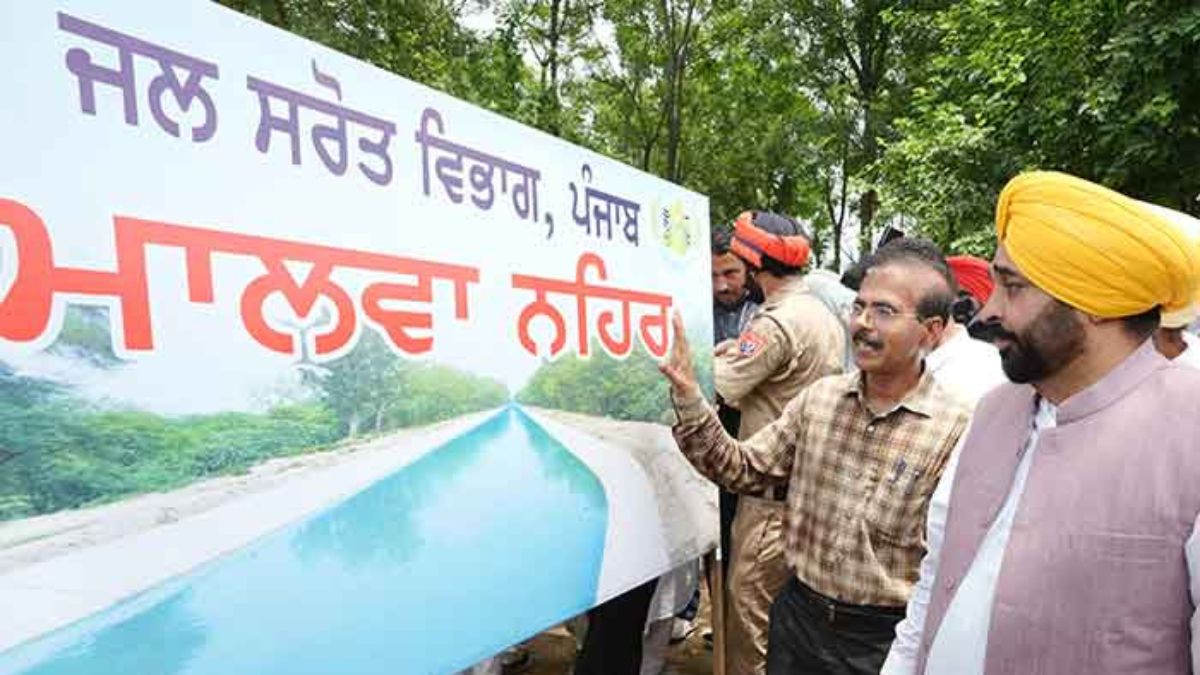1.25 Million Trees in Peril, Malwa Canal Project environmental Impact
In the northwest region of India, where the lifelines of agriculture and water management often intersect, the announcement of the Malwa Canal Project by Chief Minister Bhagwant Singh Mann has stirred significant debate. The proposed 150-kilometer canal is set to revolutionize water distribution in the Malwa region of Punjab. However, this ambitious project also poses serious environmental concerns, particularly the felling of nearly 1.25 lakh trees along the banks of the Rajasthan feeder canal, also known as the Indira Gandhi Canal.
A Closer Look at the Malwa Canal Project
The Malwa Canal Project is envisioned to enhance irrigation and support agricultural activities in the districts of Ferozepur, Faridkot, and Muktsar. This initiative, while promising to boost local agriculture, necessitates a thorough examination of its potential environmental and social impacts.
A joint inspection by the Forest Department and the Water Resources Department has highlighted the extent of the ecological disruption. The proposed alignment of the canal reveals that over 50,000 trees in Muktsar and 70,000 in the Ferozepur forest divisions will need to be axed for the canal’s construction.
The forest cover along the banks of the Rajasthan feeder canal has been a result of concerted afforestation efforts. Approximately Rs 8 crore has been invested in planting indigenous species such as sheesham, kikkar, and neem trees. Additionally, an environment park was established under the Punjab Compensatory Afforestation Fund Management and Planning Authority (CAMPA) to promote regeneration activities. These efforts have significantly increased the forest cover, as confirmed by a report from the Forest Survey of India.
The potential deforestation for the Malwa Canal Project raises several environmental concerns. Trees play a critical role in maintaining the region’s biodiversity, supporting local wildlife, and mitigating climate change effects. The large-scale felling of trees could lead to a loss of habitat for numerous species and disrupt the ecological balance.
The implementation of the Malwa Canal Project also involves navigating through the legal framework governing forest conservation in India. The Water Resources Department, which had initially provided land for the afforestation project, must now seek permission under the Forest Conservation Act (FCA), 1980. This step is crucial, especially if the area is considered a deemed forest as per the guidelines of the Supreme Court.
The Forest Conservation Act aims to regulate the diversion of forest land for non-forest purposes. It requires a rigorous process of evaluation to ensure that the ecological value of the land is not compromised. This legal safeguard is designed to balance development needs with environmental protection.
Also Read: NH Punjab News: Updates on National Highway Projects
Beyond the environmental impact, the Malwa Canal Project carries significant social and economic implications. The local communities, primarily dependent on agriculture, may benefit from improved irrigation facilities. Enhanced water availability could lead to increased agricultural productivity, which in turn could boost the local economy.
However, the project’s feasibility on technical grounds has been questioned. Previous surveys undertaken by past governments did not find the project technically viable. Issues such as water source reliability, canal alignment, and potential waterlogging need to be addressed comprehensively.
Opposition parties and environmental experts have voiced concerns regarding the Malwa Canal Project. PPCC chief Amrinder Raja Warring highlighted the need for a detailed discussion on the project’s technical, social, economic, and environmental parameters before moving forward. The large-scale deforestation, in particular, has been a focal point of the debate.
Critics argue that the project could adversely impact the region’s biodiversity and wildlife. They stress the importance of preserving the ecological integrity of the area, which has been bolstered by extensive afforestation efforts.
The Malwa Canal Project presents a classic case of balancing development with conservation. While the project aims to address water scarcity and support agriculture, it also threatens to undo years of environmental conservation efforts. This dilemma underscores the need for a holistic approach to infrastructure development, one that takes into account the long-term environmental and social impacts.
As discussions continue, it is essential for the stakeholders to engage in a transparent and inclusive dialogue. The potential benefits of the Malwa Canal Project must be weighed against the environmental costs. Mitigation measures, such as compensatory afforestation and wildlife conservation strategies, should be integral to the project plan.
The Malwa Canal Project is a significant development initiative with the potential to transform agriculture in the Malwa region. However, the environmental and social implications cannot be overlooked. A balanced approach, informed by thorough assessments and inclusive discussions, is crucial to ensure that the project benefits do not come at the expense of the region’s ecological health.
Also Read: Malwa Canal Punjab’s New Lifeline for Agriculture
FQA
What is the Malwa Canal Project?
The Malwa Canal Project is a proposed 150-kilometer canal in Punjab, aimed at improving irrigation and supporting agriculture in the districts of Ferozepur, Faridkot, and Muktsar.
How many trees will be affected by the Malwa Canal Project?
Approximately 1.25 lakh trees along the banks of the Rajasthan feeder canal are expected to be felled for the construction of the Malwa Canal.
What environmental concerns are associated with the project?
The large-scale deforestation could impact biodiversity, local wildlife, and disrupt the ecological balance of the region.
What legal permissions are required for the project?
The Water Resources Department must seek permission under the Forest Conservation Act (FCA), 1980, especially if the area is considered a deemed forest as per Supreme Court guidelines.
How will the project benefit local communities?
The project aims to improve irrigation facilities, which could enhance agricultural productivity and boost the local economy.
Why has the project’s technical feasibility been questioned?
Previous surveys conducted by past governments found issues with water source reliability, canal alignment, and potential waterlogging, questioning the project’s technical viability.

